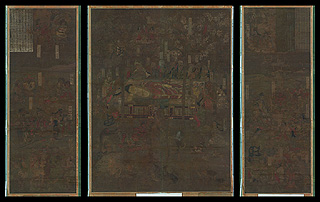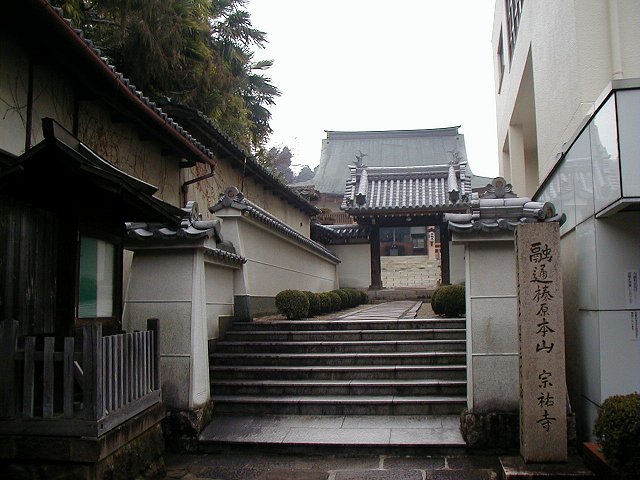| Nara Women's University |
|
|
Soyuji Soyuji is a temple located northeast of the Kintetsu Haibara station on the Nagoya Line (Uda-shi, Haibara, Hagihara 2596). It is an important juncture on the Ise Kaido (the main road linking Nara with Ise) and near Aburaya, an inn where Motoori Norinaga stayed on a visit to Yoshino in 1772 (the 9th year of the Meiwa era). Soyuji is the main temple of the Yuzu Nenbutsu sect of Japanese Buddhism and the hub for temples of the sect in the Uda area. Temple legend states that Shotoku Taishi received permission from August of the 10th Year of Emperor Bidatsu(581) to summon Bishamonten (Sk. Vaisravana, also known as Tamonten in Japanese) to the temple then called the Tamon-in. In late Heian times during the Tensho era (1131-32), Ryonin, the founder of the Yuzu Nenbutsu sect, came to the temple. When the temple halls were rebuilt with a donation from Oda Nobunaga in 1559 (the 2nd year of Eiroku), the name of the temple was changed to Soyuji The temple's statue of Bishamonten (created during the Kamakura era) has been designated an Important Cultural Property by the government. A pair of linked photographs of the temple's painting of the Buddha's Nirvana in color on silk (Jp. Konpon chakushoku Butsu nehan-zu), one infrared and the other taken in visible light, are available on this site. Click on the title on the bottom right of the photos to view the photos of the painting.
 the Buddha's Nirvana(3 pictures) |
 |
2006-2014 Soyuji & Nara Women's University Academic Information Center. All rights reserved.